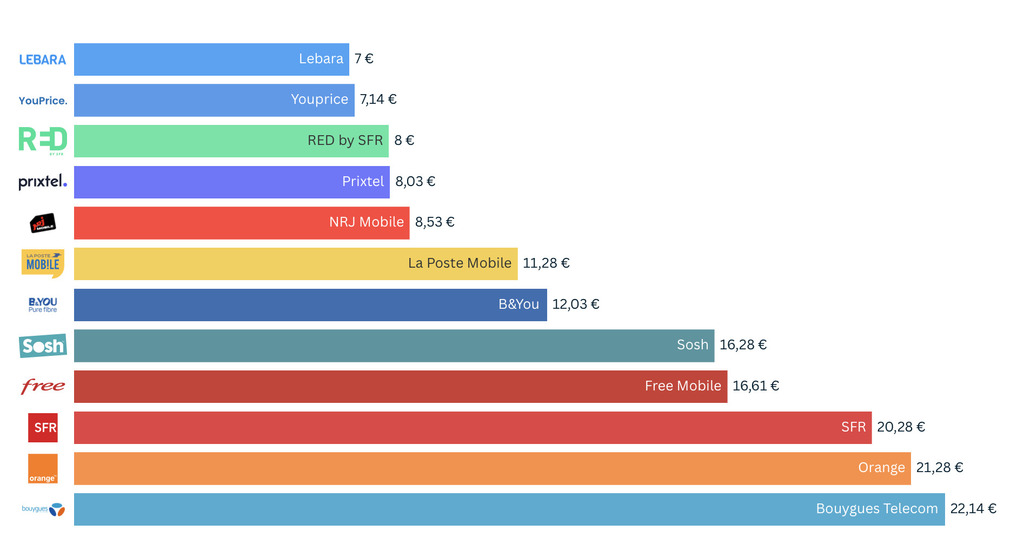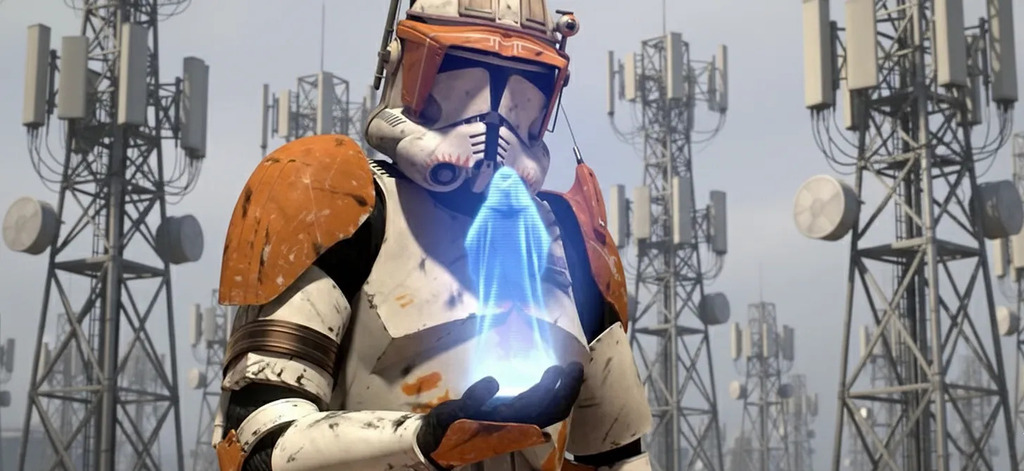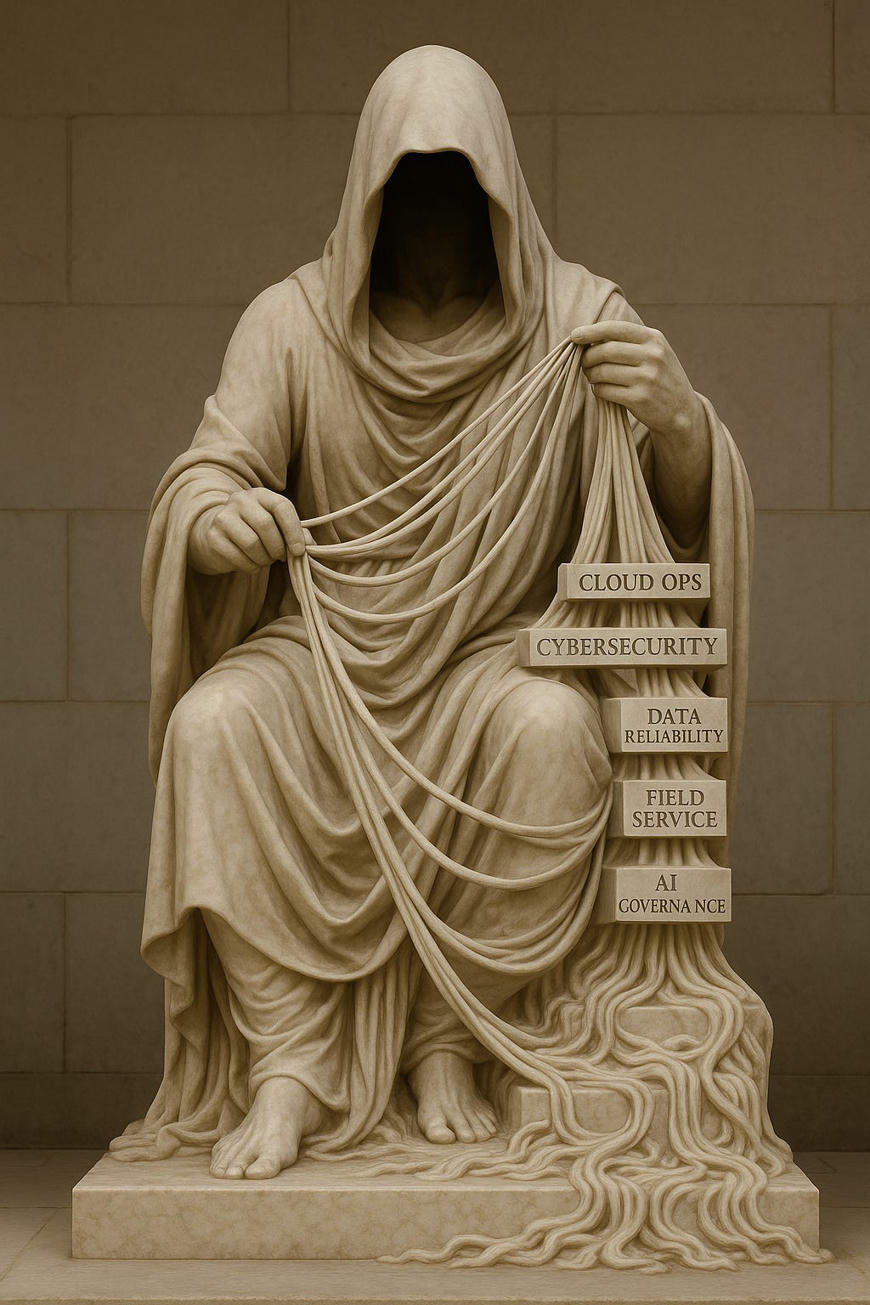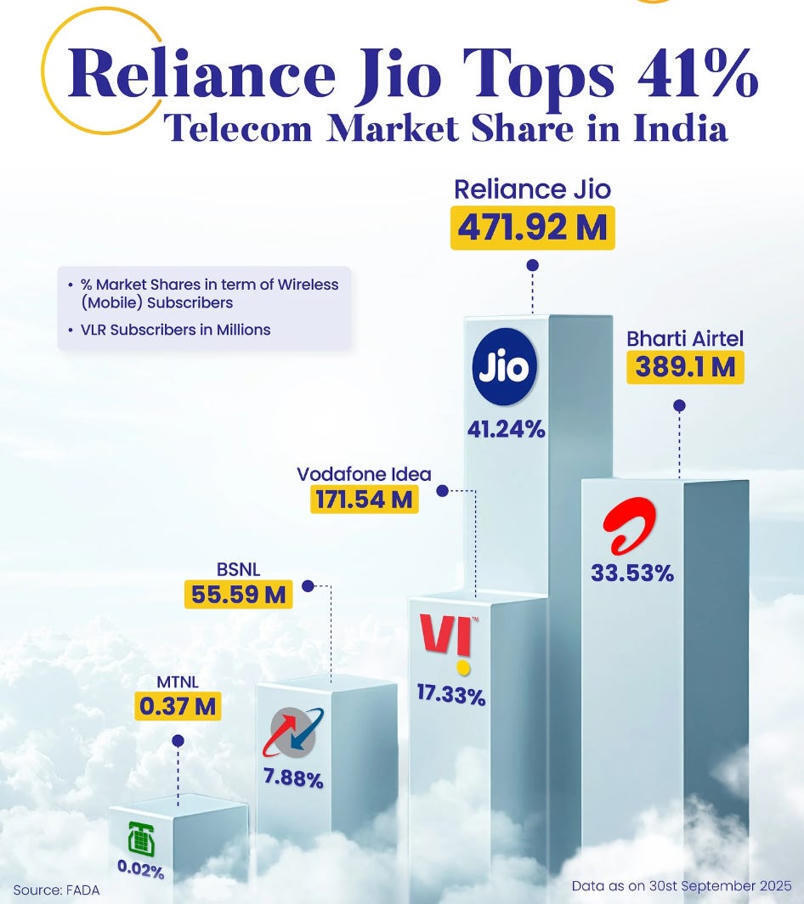
The End of Telco Gs
sebastianbarros.substack.com
Dec. 12, 2025, 5:53 a.m.
For the last twenty years, the Telco industry behaved like a controlled ecosystem in which one species dominated most of the investment, energy, and attention: radio. The G cycles were our Triassic, Jurassic, and Cretaceous. 3G, then 4G, then 5G—each presented as a new epoch, each delivering meaningful improvements, but none altering the underlying organism. More antennas, more mid-band, higher-order MIMO, better silicon, better spectral efficiency, yet the same radio architecture adapting within the same ecological niche. Approximately 70% of operator capex was allocated to radio networks, and approximately 60% of operator opex was related to radio performance, energy, and maintenance. What sustained dinosaurs' dominance for so long were stable environmental conditions. In telecom, the equivalent was data traffic.
Share on

Fairphone, téléphone reconditionné… Comment choisir un smartphone éthique ?
vert.eco
Dec. 11, 2025, 9:27 p.m.
On se jette, allô ? S’il est impossible de trouver un téléphone portable 100% écologique et éthique, certains produits sont meilleurs que d’autres. Éco-conception, réparabilité, reconditionnement… Vert vous aide à faire le tri pour choisir le smartphone le moins problématique, écologiquement et socialement.
Share on

Quel est le prix moyen d'un forfait mobile en Décembre 2025 ?
www.zoneadsl.com
Dec. 10, 2025, 12:31 p.m.
Orange et Bouygues Telecom conservent les tarifs les plus élevés du marché, avec des prix moyens supérieurs à 21 €, misant sur la qualité de service et la fidélisation de leurs abonnés SFR reste dans une gamme similaire, autour de 20,28 €, tandis que Free et Sosh se positionnent légèrement en dessous, autour de 16 €, pour conserver leur attractivité sans basculer dans le low-cost À l’inverse, les MVNO comme Lebara, YouPrice, NRJ Mobile ou Prixtel affichent des prix très compétitifs, souvent sous la barre des 10 €. Ces acteurs misent sur la simplicité et l’absence de services superflus pour proposer les forfaits les plus abordables du marché, tout en s’appuyant sur les réseaux des grands opérateurs.

Telcos, Execute code 66
sebastianbarros.substack.com
Dec. 9, 2025, 6:10 p.m.
In Star Wars, Order 66 erased the Jedi from within. In telecom, the legacy operator model is being decommissioned by its own internal logic. Between 2025 and 2030, telcos will streamline operations, retire legacy systems, reduce headcount, and refactor their digital and physical stacks. This is not a cost-cutting exercise but a structural reset.
Share on

Formal Methods for Mobile Ad Hoc Networks: A Survey
arxiv.org
Dec. 7, 2025, 6:47 p.m.
In a mobile ad hoc network (MANET), communication is wireless and nodes can move independently. Properly analyzing the functional correctness, performance, and security of MANET protocols is a challenging task. A wide range of formal specification and analysis techniques have been employed in the analysis of MANET protocols. This survey presents an overview of rigorous formal analysis techniques and their applications, with a focus on MANET routing protocols. Next to functional correctness, also real-time properties and security are considered. Moreover, an overview is given of formal frameworks that target MANETs specifically, as well as mobility models that underlie performance analyses of MANET protocols. The aim is to give a comprehensive and coherent overview of this rather scattered field, in which a variety of rigorous formal methods have been applied to analyze different aspects of a wide range of MANET protocols.
Share on

OpenMANET
openmanet.net
Dec. 7, 2025, 6:41 p.m.
OpenMANET is an open-source project for building Raspberry Pi–based MANET radios on Wi-Fi HaLow (915 MHz) using Morse Micro chipsets. A MANET (Mobile Ad-Hoc Network) is a self-forming wireless mesh where each node connects directly without centralized infrastructure. This technology is especially useful in the civilian space for search and rescue, disaster response, airsoft events, and any disconnected communications scenario. Designed to be budget-friendly with excellent long-range performance. The build is designed to integrate with ATAK over multicast, but works equally well over standard IP and internet links.
Share on

5G Was the Last Mobile Network Built for Humans
sebastianbarros.substack.com
Dec. 6, 2025, 4:31 p.m.
The next decade forces telecom to abandon human centric assumptions and design a network that can support continuous inference, real time robotics and machine generated traffic at global scale.
Share on

L’économie collaborative
www.ecologie.gouv.fr
Dec. 6, 2025, 3:59 p.m.
La consommation collaborative ou participative se définit communément comme la manière traditionnelle de partager, d'échanger, de prêter, de louer et d'offrir, repensée à la faveur de la technologie moderne et des communautés.
Share on

Économie collaborative : définition, avantages, exemples
climate.selectra.com
Dec. 6, 2025, 3:53 p.m.
L’économie collaborative a révolutionné le modèle économique actuel. En quoi consiste-t-elle et quels sont ses avantages pour notre société ? Zoom sur quelques exemples de plateformes collaboratives.
Share on

Telcos, if you have +1000 plans you do not have a plan.
sebastianbarros.substack.com
Dec. 5, 2025, 12:12 p.m.
Many operators today support 500-2,000 plan variants in billing and provisioning. I have seen Telcos with more than 2,000. The visible retail catalogue may show 50 options. Still, the internal configuration space is an uncontrolled forest of legacy plans, micro bundles, expired promotions, seasonal offers, roaming packs, device finance combinations, and regional conditions.The internal narrative is always the same: We have a plan for every need. That is the wrong story. If you have one thousand plans, you do not understand your segments. You are shooting in the dark. Quantity replaces insight.
Share on

The Telco Organizational Black Hole
sebastianbarros.substack.com
Dec. 4, 2025, 10 a.m.
Why Telcos Are Spending Billions on Transformation, Only to Feed the Ghost of Yesterday... The industry is not just underperforming; it is actively using its massive capital expenditure to service the maintenance and complexity of its own past, leading to a permanent state of diminishing returns. The key challenge we are facing is that the problem is not the telco’s technology stack; it is the telco’s DNA.
Share on

Elf Labs Inks $3.5 Million Development Deal to Launch First Mobile Network Built Around Iconic Characters
www.businesswire.com
Dec. 4, 2025, 9:35 a.m.
Elf Labs has signed a $3.5 million development deal with CompaxDigital to launch Elf Mobile—the first wireless service built around iconic character IP and immersive family entertainment. Powered by T-Mobile’s network, the service will blend 5G connectivity with immersive original content and branded experiences inspired by beloved classics like Snow White, Pinocchio, and Peter Pan.

A flying ad-hoc network dataset for early time series classification of grey hole attacks
www.nature.com
Nov. 30, 2025, 9:20 p.m.
Flying ad-hoc networks (FANETs) consist of multiple unmanned aerial vehicles (UAVs) that rely on multi-hop routes for communication. These routes are particularly susceptible to grey hole attacks, necessitating swift and accurate defence to preserve the network’s quality of service. Grey hole attacks are a type of denial-of-service attack where malicious nodes selectively drop packets, disrupting the normal flow of data in the network. This paper introduces and motivates a novel dataset, FAN-GHETS24, designed for the fast classification of various grey hole attacks.
Share on

New system aims to keep people connected when networks fail
www.helpnetsecurity.com
Nov. 30, 2025, 9:18 p.m.
The project uses LoRa, a long-range, low-power radio technology, to create a mobile ad hoc network, or MANET. These radios connect directly to each other without relying on cell towers or Wi-Fi. The researchers built a smartphone app that links to the radios through Bluetooth, allowing civilians to send messages and share location data using familiar tools on their phones.
Share on

Confessions: Five Telco Myths that Will Not Die
sebastianbarros.substack.com
Nov. 30, 2025, 1:46 p.m.
A direct look at the hidden assumptions shaping telco strategy and the truths buried beneath them
Share on

How device hoarding by Americans is costing economy
www.cnbc.com
Nov. 30, 2025, 1:44 p.m.
Americans are hanging onto their smartphones for much longer than they did a decade ago, but new releases like Apple’s iPhone 17 can entice consumers to upgrade. Businesses tend to hang onto their devices even longer than individual consumers, especially overseas. While it may seem to be a smart money move, it can result in a costly productivity and innovation lag for the economy.
Share on

Internet en France : ce que les Français ont vraiment fait en octobre 2025
www.servicesmobiles.fr
Nov. 24, 2025, 1:09 p.m.
Chaque mois, plus de 56 millions de Français se connectent. Mais quels sites dominent vraiment nos journées ? Et surtout : comment notre usage change-t-il avec la montée des applis, de la santé en ligne et de l’IA ? Voici la radiographie complète du web français en octobre 2025.
Share on

Qualcomm tire le frein à main sur l'Open Source d'Arduino
www.minimachines.net
Nov. 23, 2025, 2:12 p.m.
Les nouvelles conditions d’utilisation mettent en évidence l’instauration d’une nouvelle licence beaucoup plus restrictive. Celle-ci introduit une licence perpétuelle et irrévocable sur tous les éléments proposés par les utilisateurs sur la plateforme. Chaque bout de code uploadé chez Arduino devient non pas Open Source mais propriété de Qualcomm. Une surveillance complète de toutes les fonctions employées avec l’IA, ce qui signifie que tout élément intéressant pour Qualcomm pourra être récupéré par leurs soins.

Nokia and Ericsson Head to Head
sebastianbarros.substack.com
Nov. 23, 2025, 12:27 p.m.
Most analysts don’t understand Nokia and Ericsson. That’s because they’ve never had to. These two companies are not just vendors; they’re survivors. One started as a telegraph repair shop, the other as a paper mill. A century and a half later, they’re still here, writing the code, engineering the chips, and building the networks that keep the world connected.They’ve outlasted wars, pandemics, economic collapses, and political extremes such as communism, socialism, capitalism, and fascism. Fads came and went. These two didn’t. They evolved. Quietly, relentlessly, in labs and field trials. Through thousands of patents, research breakthroughs, and engineering standards. They’re not just part of the telecom industry; they are its foundation. You’re reading this on a device that almost certainly relies on its IP.
Share on

A Sneak Peek at India’s Planetary Size Telecom Industry
sebastianbarros.substack.com
Nov. 20, 2025, 1:11 p.m.
India’s telecom market behaves like a digital continent. It carries volumes that rival entire regions, yet it runs on the lowest revenue per user among major economies. Two operators deliver world-class network performance at a national scale, one operator remains structurally distressed, and a state player anchors policy goals. This mix of extreme usage, thin margins, and relentless investment pressure creates a system that is both remarkable and unstable.
Share on